When trying to find your perfect running shoe there’s always a question of which brand is right for you. Brooks vs Nike running shoes is another comparison of proprietary technologies, fit, and feel. I’ll break down comparable models to see how each is different or similar to make your choice.

Both brands have a long history, things people love and things people dislike.
And like every running shoe brand they tend to have moments where they seem to be the dominant running shoe. This has a lot to do with marketing or getting lucky with a superstar athlete wearing their gear on a main stage performance (Olympics, NYC marathon, etc).
When it comes to these two brands, I think it’s key to know that both have continued to change an adapt. So if you’ve tried one previously without luck, you might need to be willing to test a new model.
Main Differences Brooks vs Nike
Nike and New Balance have a similar range of shoes, but a very different fit and feel. Maybe some of the difference is simply in the way that they market, which makes you feel differently about the gear.
I break down the differences in more detail below, but here’s a quick overview:
Brooks Running Shoes
- Traditional running shoe with 6mm-12mm heel drop (a LOT of models at 12mm)
- Exclusively designs running shoes, with a huge variety of models
- Science-driven to accommodate rather than correct gait
- Has more fun holiday styled shoes than any other brand (Christmas, 4th of July, Thanksgiving, St Pat’s)
- Increasing focus on performance apparel
Nike Running Shoes
- More narrow fit, especially in the heel and midsole
- Tend to run smaller in width and length than many other brands
- A larger focus on newest and trendiest technology to “improve running economy”
- Known across a wide variety of sports and highly visible in competition
- Loves to be high fashion
- Has a large brand loyal following
Is Nike Better Than Brooks?
Nike has been dominating the elite running world for many years, so the question is do they have shoes for the rest of us?
100% they have a variety of shoes for different runners. And while you might see far more elite runners in Nike gear, Brooks is an equally great running shoe for most of us and has sponsored the Hanson elite team. The shoes worn by elite runners are often custom made, specific to a team or sponsored.
I’ve worn both brands and will add some personal thoughts, along with comparable models from each brand at the end.
Nike Vs Brooks Running Shoe Models
Now that you know more about each brand, let’s look at their top models in each of the main categories. There’s no winner declared here because all are great shoes, it’s just about which one is best for your foot.
Did you notice I even said the brands in reverse order this time…seriously no favorites, I have run in both brands many different times over the years.
Quick note, I absolutely encourage you to checkout Nike’s return policy! It makes it much easier to test out a shoe and return if it doesn’t feel right.
Stability Running Shoe
👉Structure 26
The Structure is the core model, and Nike will offer Plus and Premium models as well. It’s a daily trainer that focuses more on support than cushion, especially in the arch to aid with pronation issues.
We found the shoe to be well thought out and designed, with just enough cushion and stability that’s not overbearing. If you are more of a neutral runner and don’t struggle with overpronation, there is a chance this support might feel like a bit much.
Nike is no longer using rigid posts for support, having replaced it with its Midfoot Support System. This wraps the foot in the lateral rear heel and the medial midfoot. If you need the support, this should feel like gentle guidance that’s needed considering the 38mm stack height.
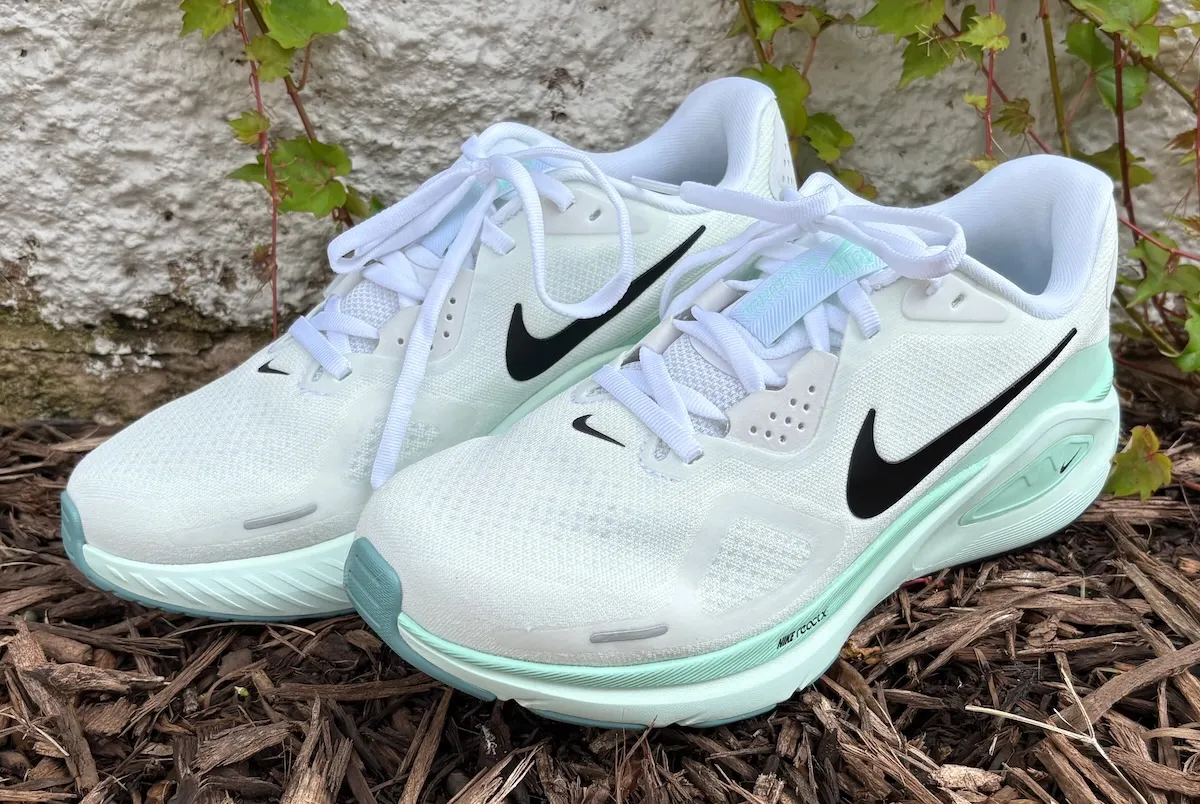
The sole is full-length ReactX, adding more durability and just the right amount of cushioning. A super padded tongue and collar add both comfort and security as well.
The Structure isn’t the fastest shoe, but it feels good for longer miles and the drop could help runners who need ankle support as well.
- Weight: 11.3 oz Men’s, 9.2 oz Women’s
- Heel Drop: 10 mm
- Available in 6 Colors
- Available in wide
- Available on nike.com for $145
- Check out our full review of the Nike Structure 26 here >>
👉Brooks Adrenaline GTS 25
The brand’s most popular road running shoe (GTS stands for go-to-shoe) just turned 25 and comes in a swath of colors. This supportive shoe is best for a medium to high arch, and is part of the cushion line.
This was one of the very FIRST shoes that I bought at a running store! I thought it was so incredibly cool my name was on the shoe…ha!!! But yes they were super duper bright white (as you’ll see below).

The Brooks Adrenaline GTS is going to grow in popularity as Brooks got rid of it’s two other stability models the Ravena and Transcend. So it’s a good thing that it has many years of very happy runners behind it. It’s definitely a firmer daily trainer, to help provide that necessary support for overpronation.
While I wouldn’t recommend every runner grab these shoes for a track workout, for runners who truly need the stability to stay injury-free, they got the job done.
- Weight: 10.6 oz Men’s, 9.5 oz Women’s
- Stack Height: 37 mm
- Heel Drop: 10 mm
- Available in nine colors
- Available in wide or extra wide
- Available on Brooks Running for $155.00
- Neutral Running Shoe
👉Nike Pegasus 41
The Nike Pegasus has all the bells and whistles that a runner could ask for: just the right amount of cushion in midsole for maximum comfort, durable rubber outsole to withstand, and a breathable mesh upper to keep your feet feeling fresh and dry.
But let’s get real for a second. The Nike Pegasus isn’t just a pretty shoe. It’s got substance too, with a firm heel counter that keeps your foot locked in place and a molded foam insole that provides extra support for those long runs.
This is a good option for your easy weekday runs or for the support of a marathon training run.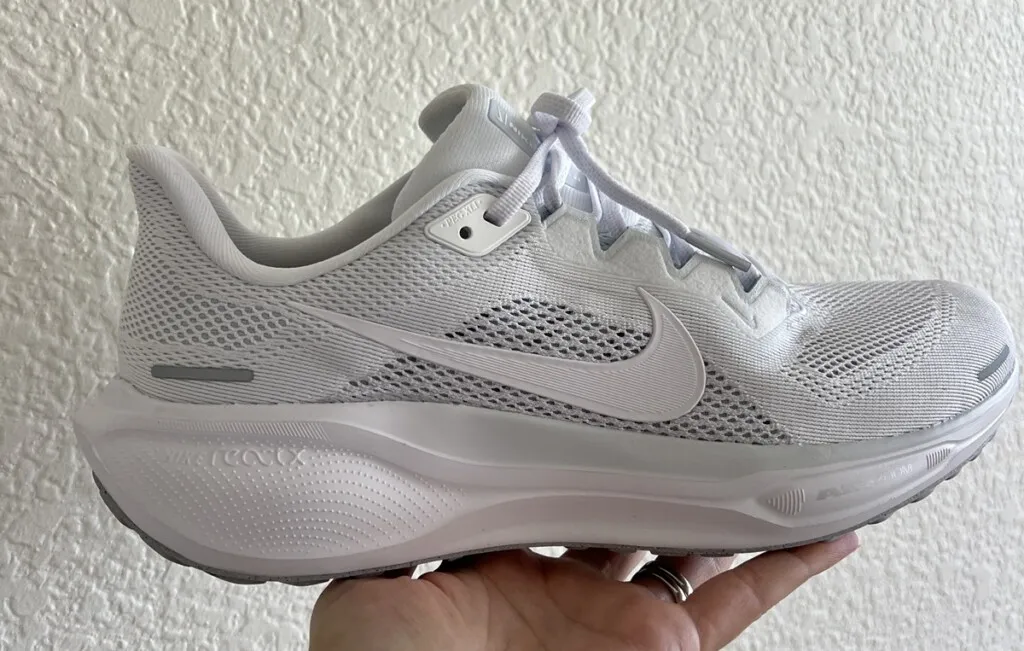
This is definitely a shoe that I like for those weekday training runs. Not over built, just enough cushion and a little roomier than other Nike’s.
- Weight: 10.4 oz men’s, 8.6 oz women’s
- Heel drop: 10mm
- Available in 5 colors
- Available in Extra Wide
- Available as a trail shoe as well
- Find it here on Nike.com for $140.
- Check out our full review of the Nike Pegasus 41 here >>
👉Brooks Ghost 17
The Brooks Ghost 17 still delivers everything a runner could ask for: just the right amount of cushion in midsole, a durable rubber outsole and a breathable mesh upper to keep your feet feeling comfortable mile after mile.
The change our team is most excited about is in the heel to toe drop.The Ghost 17 is a neutral running shoe now with a 10mm heel to toe drop.
It’s not a huge difference, but if the 12 mm felt too high, you’ll really appreciate this. Plus, the lower drop will make a difference in potentially reducing knee pain or IT Band issues that often pop up with newer runners.
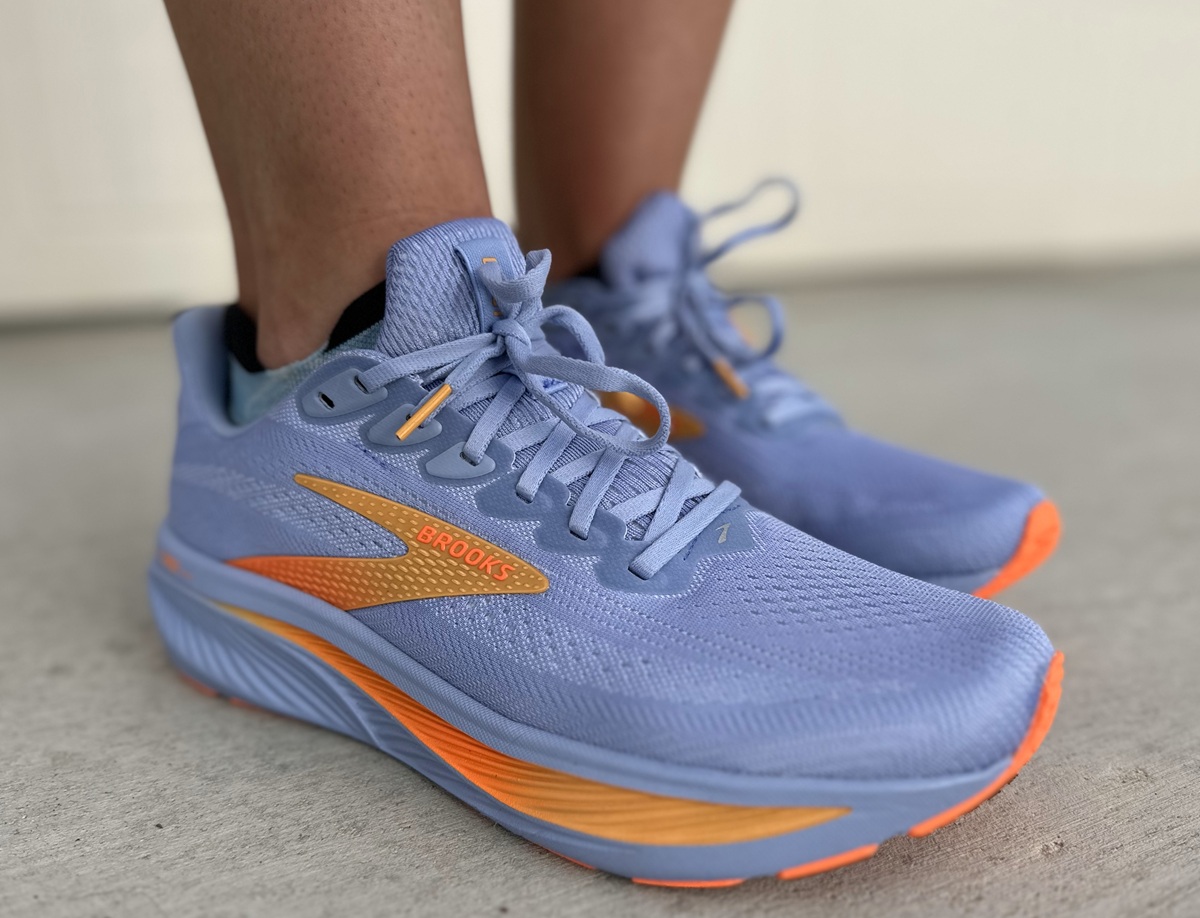
The increase in stack height is actually why they changed the heel drop. It’s allowing for more stability in the shoe and ensures that you aren’t sinking to the ground as they keep adding cushion.
If you’re looking for a cushioned neutral shoe to use for running, run/walk intervals, or trying to get those daily 10k steps, the Ghost 17 is going to be a solid pick.
- Heel toe drop: 10mm
- Weight: 9.0 oz women’s, 10.1 oz men’s
- Stack: 36 mm
- Available in six colors
- Available in Wide, Narrow and Extra Wide in select colorways
- Available from Brooksrunning.com for $150
- Read our full review of the Ghost 17 here>>
Cushioned Running Shoe
👉Vomero 18
This year Nike moved to a new naming system, with the Vomero being their max cushion option. Overall, we find it to be great for middle of the pack and back, and one that lets you enjoy your easy days and long runs.
The Vomero 18 has one of the tallest max cushioned running shoes we’ve tested, at 46mm. But even with the max cushion, it doesn’t feel heavy or clunky, so it shouldn’t hinder you on longer run days.
Nike combined different types of foam to offer both comfort and durability. The top layer is ZoomX foam made from PEBA, making it light with higher energy return. Underneath is their ReactX foam, which is slightly firmer and more responsive.
The combination makes these shoes really idea for long days, because they seem to return energy while remaining soft underfoot.
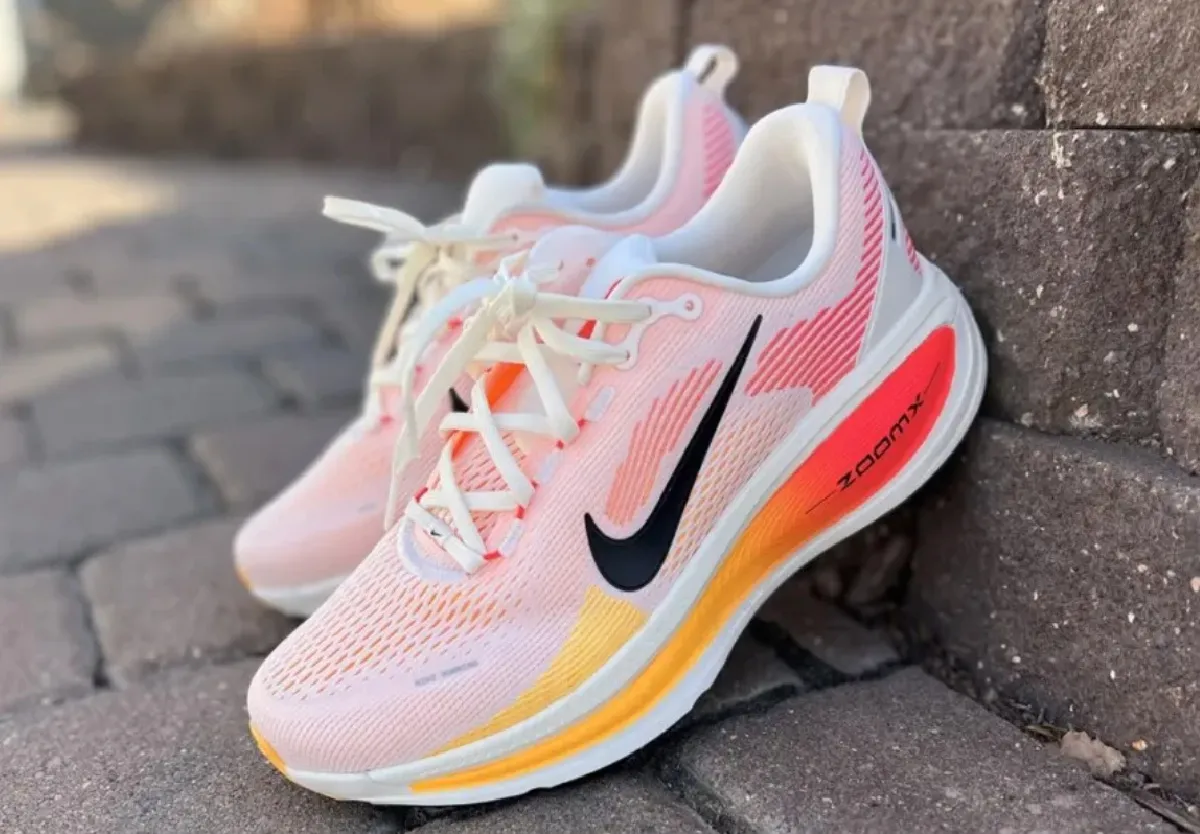 Nike is not known for being super accommodating for wide feet and these are no different. The TPU foam holds up to wear and tear, though, and these are designed to take you through marathon mileage.
Nike is not known for being super accommodating for wide feet and these are no different. The TPU foam holds up to wear and tear, though, and these are designed to take you through marathon mileage.
That said, they’re not a shoe for tempos or any type of speed workout.
And listen – even though looks shouldn’t matter, they do to most of us. So, it’s definitely a bonus that we really love the way the Vomero 18 looks in the heel and overall color.
- Heel drop: 10mm
- Weight: 9.3 oz women’s, 11.5 oz men’s
- Available in 6 colors
- Not available in Wide
- Available at Nike.com $150
- Check out our full review of the Nike Vomero 18 here >>
👉Brooks Glycerin 22
The Glycerin remains one of Brooks most loved running shoes. I told you I ran a marathon in it! It‘s a great all–around running shoe, providing great cushioning for a variety of running distances.
Brooks slightly changed things and use their DNA tuned foam underfoot. This EVA foam is the most durable and allows for a lot of softness. With their DNA tuned technology they can change the softness in different areas of the shoe based on usage type. In this case, a go to daily trainer.
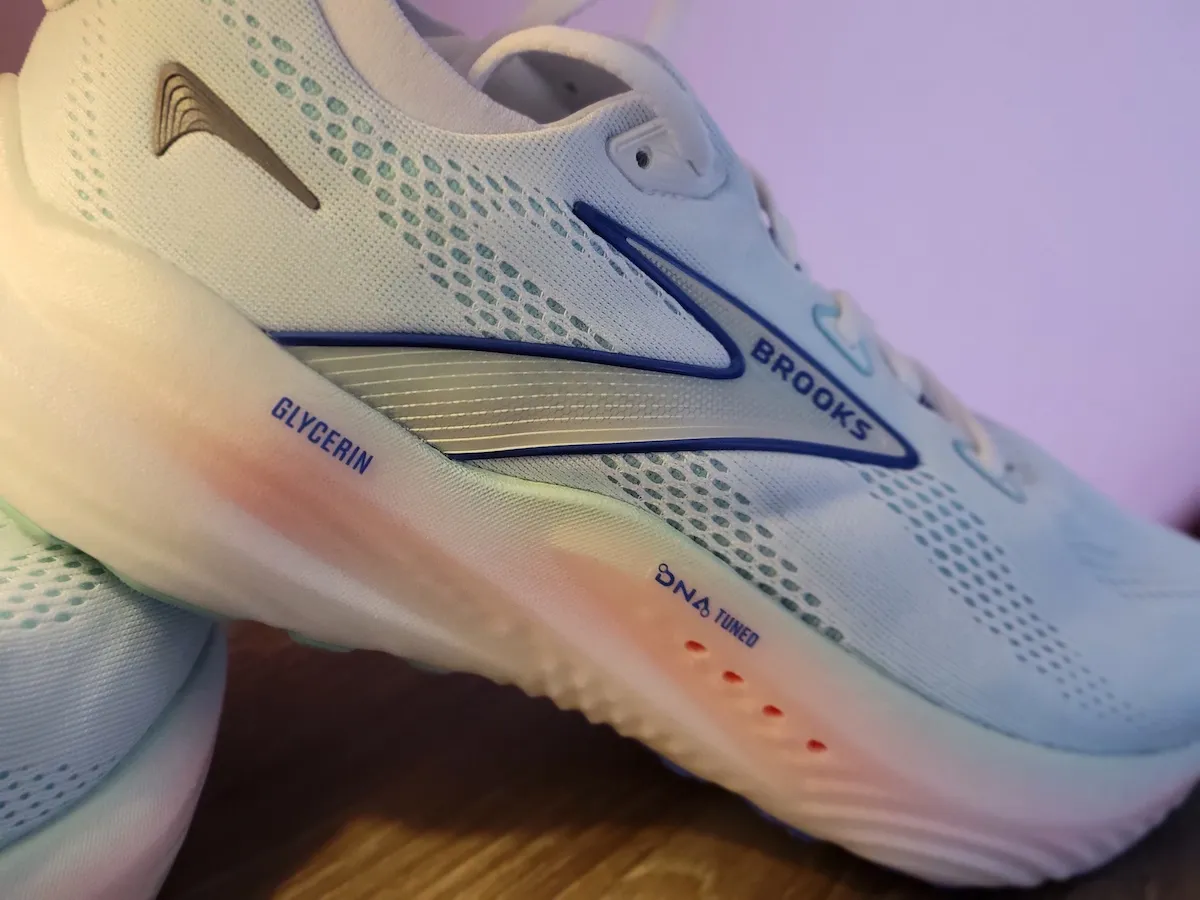
- Weight: 10.2 oz Men’s, 9.1 oz Women’s
- Heel Drop: 10 mm
- 9 colors available
- Available in Medium, Wide and Extra Wide (wide and extra wide widths available in select colors)
- Also available as the very popular Glycerin GTS for stability lovers
- Available on www.brooks.com for $165
- Check out our full review of the Brooks Glycerin 22 here >>
Carbon Fiber Plate Shoes
Are they cool new technology, yes. Do they last as long as your other shoes nope.
So if you want to test these out use them for speed work and then race day! Thus far in my testing, they are a pricey piece of gear that can absolutely give you a boost.
For some runners they can also be useful in dealing with constant lower leg injuries.
👉Brooks Hyperion Elite
The Brooks Hyperion Elite is a lightweight, high-performance running shoe designed for speed and efficiency. It’s doesn’t have a full solid plate like we see in other Super Shoes and the reasoning behind that is both to keep the shoe lighter and only provide stability to the cushioning not dampen it.
SpeedVault Race+ plate has been “fine tuned” so that the plate is actually different based on the size of the shoe and thus meeting the needs of that runner. The larger the shoe, the stiffer the plate in essence.

Now they are using what they call DNA Gold 100% Super Critical PEBA foam, instead of Super Critical EVA. This helped to drop an entire oz of weight from the shoe, but more importantly changed the feel underfoot.
- Weight: 7.4 oz men’s 10.5 (Unisex sizing)
- Heel drop: 8mm
- 1 color available
- Not available in Wide
- Available at BrooksRunning.com for $250
- Check out our full review of the Brooks Hyperion Elite 4 here >>
👉Vaporfly 4
Perhaps the most surprising thing about these shoes is how good they feel right out of the box. They’re super light and responsive, and for us, made race day seem too far away.
If you’re running your next even with a personal record in mind, these could give you the extra pop that you need to keep pushing across the finish line.

- Weight: 6.7 oz Men’s, 5.3 oz Women’s (Unisex sizing)
- Heel Drop: 6 mm
- Available in 3 colors
- Not available in wide
- Available on Nike.com for $260
- Check out our full review of the Nike Vaporfly 3 here >>
And more importantly a comparison of the Nike Alphafly vs Vaporfly. Which is the right race shoe for you?
Brooks vs Nike Feature Comparison
Both brands have been around for a very long time and are leaders in running shoe design. They both offer various technologies to aid with comfort, support, stability, and cushion.
They differ in both fit and technology.
Here is a breakdown of each shoe based on the components buyers need to consider when purchasing a running shoe.
It’s gonna get a little TECHY…so you can just skip on down to the specific model comparison if you want, but personally if I’m shelling out $150 for shoes, I kinda want to know why.
Durability
The lifespan of shoes from both companies is fairly comparable.
- Brooks shoes have a life expectancy ranging from 300 to 500 miles, or three to six months, depending on your monthly mileage.
- Nike’s Vapor Fly is only going to give you about 200 miles, but most shoes are in the 300-500 mile range
Determining when to replace running shoes, of course, all depends on your gait, weight, and whether you run mostly on trail or road.
Shoe Fit
Brooks shoes have a wider toe box than other traditional models, which makes them a great choice for runners with wide feet or bunions. The brand recommends that buyers go up a half size from their everyday shoe.
Brooks does a great job with online fit, the Brooks shoe fit finder will give you an idea of what to look for in a running shoe when you do visit your local store.
Nike running shoes are often reported to run small.
They do not offer the variety of widths that you’ll see with New Balance. But if you like the fit, you’ll find it fairly consistent across models.
 This is an older, yet still very USEFUL graphic from the Huffington Post.
This is an older, yet still very USEFUL graphic from the Huffington Post.
I forget we may not all know the lingo when talking about different components of the shoe and why they matter.
Cushioning
Brooks uses two types of cushioning in their designs, which allows for a wide variety of cushion from plush to more minimal.
- DNA LOFT – Soft cushioning, that adapts to a runner’s profile, stride, and speed
- BioMoGo DNA – also adapts to runner’s profile, stride, and speed, providing a more balanced experience with a bit of spring.
Nike started putting air in their shoes back in 1977 to improve cushioning.
“Nike Air technology consists of pressurized air inside a tough yet flexible bag and provides more spring without compromising the structure.”
And since the 90’s they’ve been recycling waste material from production in to new shoes. They continue to look at this sustainability in developing new shoes.
However now, their big thing is ZOOMX foam. I wrote about it in-depth on the Nike Invincible review.
Nike ZoomX cushioning is Nike’s latest innovation in running technology.
It’s a cushioning system that provides lightweight, responsive cushioning for a faster and more comfortable ride.
Made from a unique foam material that is 30% lighter than traditional foam and is designed to provide maximum energy return, allowing runners to go farther and faster. The foam also provides a softer landing and smoother transitions from heel to toe.
Stability
Rather than “fix” the way someone runs, Brooks technology helps to stabilize your stride based on how you naturally run. So in essence, both brands have the same take on stability. Just different technology.
Whether that’s a little bit more support in the arch or through the midline of the foot it helps hips, knees, and joints to move naturally, offering support when needed. Neutral runners may only require them to kick in when their stride is off.
Nike does say their stability shoes are slightly wider and also designed with a curve that will help with heel to toe transitions.
As you may know, I’m not a huge fan of stability shoes for most runners. I am not finding a big difference in brands, they are all focused on preventing that foot roll and often feel a little stiffer.
Affordability
Brooks running shoes prices range between $110 to $150, while Nike start at a slightly higher price at $120 to $180.
The most popular models for both brands are priced toward the higher range. Carbon fiber shoes and often trail shoes will go beyond those rates, like the Vapor Fly which is over $200.
You’ll notice that every brand offers a range and this is indeed due to a difference in technology and where they sell the shoe. They know that the big box store can sell the shoe with less in it, while the local running store needs to be best for dedicated runners.
More About Brooks
Believe it or not, Brooks started out in 1914 making ballet slippers and bathing shoes. Since then, they have made everything from baseball and football cleats to roller skates.
It wasn’t until Frank Shorter won the marathon at the 1972 Munich Olympics that Brooks considered limiting its focus. The first running shoe debuted in 1974 and their most popular running shoe, the Adrenaline GTS first hit the market in 1999.
In 2001, Brooks decided to focus solely on running.
They introduced the Transcend in 2013, a shoe that used new biomechanics technology to create a GuideRails technology, allowing runners to run naturally without trying to correct their gait.
The Seattle-based company is also well known for its commitment to sustainability and giving back. Brooks donates time, gear, and money to companies that align with their values around diversity, equity, and inclusion and staff receive paid annual volunteer time.
More About Nike
Is there anyone who doesn’t know the story of Nike yet?? The brand actually started in 1964 as Blue Ribbon Sports and didn’t take on the name of Nike the Greek Goddess until 1971.
If you haven’t read Shoe Dog by Phil Knight, it’s a wonderful book that gives you so much insight to the building of a company and a brand.
I fully understand not everyone loves Nike due to many of the practices we’ve seen with their athletes. I’m just here to provide details about the gear, you make those judgements.
In 1972, the Nike Waffle Racer was handed out at the Olympics and things really started to take off. One of these original pairs of shoes recently sold for almost $500,000!
From there they have continued to inovate and consistently produce new models of shoes for a variety of sports.
Nike has also dominated the marketing game.
How to Choose Nike or Brooks Running Shoes?
Nike and Brooks are two extremely well known running shoe brands, but more important than brand is the fit of the shoe.
Your gait and feet will change over time and you may need to change shoes.
This is also why I recommend rotating through several pairs of shoes at once.
And remember, just because these are two of the most well known brands on the market, there are still plenty of other shoe brands to select from if neither Brooks nor Nike has the right shoe for you.
Keep in mind that shoe design can change, even with the same model, so always assess how the shoe fits every time you replace a pair.
For more help selecting the right shoe for you, don’t worry, I’ve got you:
- Best Trail Running Shoes
- Top 5 Marathon Running Shoes
- HOKA vs On Running
- ASICS vs Brooks
- Best Running Shoes
Other ways to connect with Amanda
Instagram Daily Fun: RunToTheFinish
Facebook Community Chatter: RunToTheFinish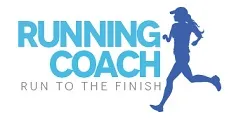
Sign Up to Receive a Weekly Newsletter with Top Running Tips and Laughs
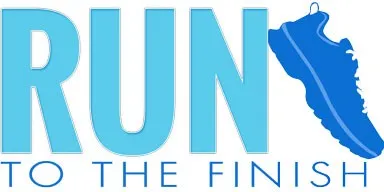


 40 Fitness Gifts for Her That Deliver (What Women Actually Want, From Female Coaches)
40 Fitness Gifts for Her That Deliver (What Women Actually Want, From Female Coaches)
Leave a Reply